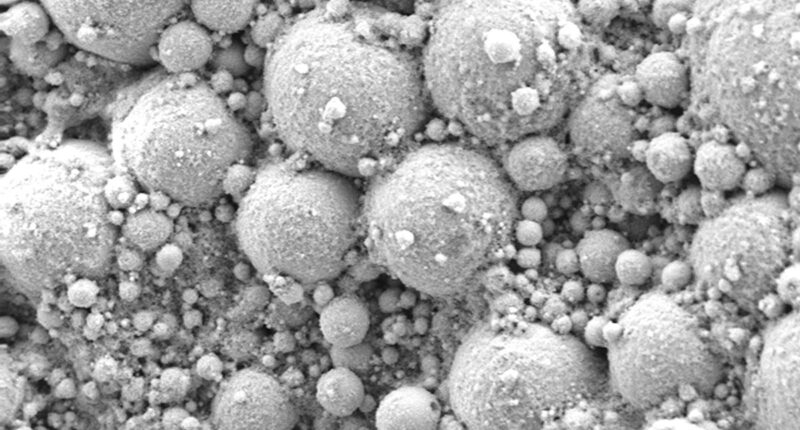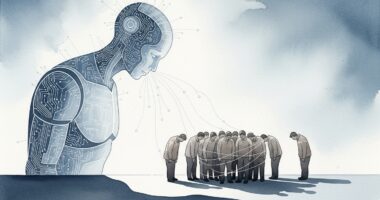Researchers have developed “living metal” composites embedded with bacterial endospores that exhibit self-healing abilities, paving the way for dynamic communication and integration between electronic and biological systems.
The composite material combines liquid metal with dormant endospores for the bacteria Bacillus subtilis, overcoming many of the limitations of liquid metal alone. The findings were published in the journal Advanced Functional Materials.
Liquid metals pose challenges for integration into bioelectronic systems. Their hydrophobic properties hinder adhesion to electronic substrates, and exposure to air or water leads to the formation of an oxide layer that restricts electron flow and disrupts communication between electronic and biological systems.
“When we combine the spores with the liquid metal droplets, there is a huge attractive force, because the spores have chemical functional groups on their surface that interact with the liquid metal oxide layers. This strong force ruptures the oxide layers so the metal can be conductive,” said Professor Seokheun “Sean” Choi from the Department of Electrical and Computer Engineering at Binghamton University’s Thomas J. Watson College of Engineering and Applied Science.
Enhanced electrical conductivity
The spores can stay inactive under harsh conditions and germinate when the environment is more favourable. The composite is also easily absorbed into device substrates, such as paper, while retaining the best properties of metal. It even exhibits enhanced electrical conductivity when the spores germinate.
Most importantly, the composite shows self-healing abilities. When a break in the material happens, the composite autonomously fills the gap, an important breakthrough when a circuit is damaged and can’t easily be replaced.
“Biological systems use molecules and ions for metabolism or signalling, while electronics exclusively depend on the electrons, so that will create communication errors,” said Professor Choi. “Electrogenic bacteria use molecules and ions but also generate electrons. The question is how we can seamlessly integrate this electrogenic bacteria into a living electrode to bridge these two systems.”
Before any commercial applications, more experimentation is needed to better control the activation of the endospores and to evaluate the liquid living metal composites for long-term stability in a variety of environments. In the future, such materials could enable wearable or implantable devices to interface safely and directly with human tissue.
The paper was co-authored by Professor Choi, Maryam Rezaie and doctoral student Yang “Lexi” Gao.










